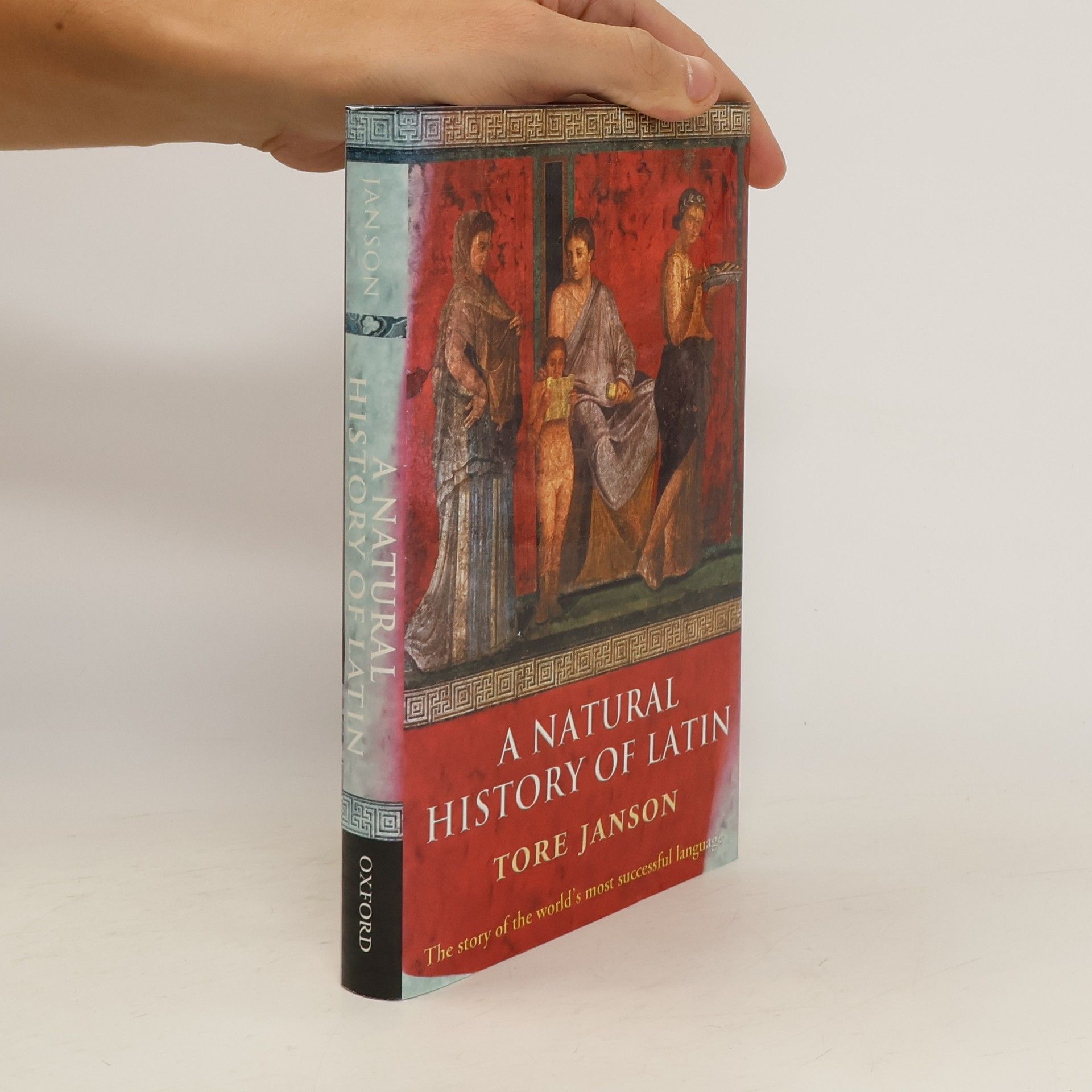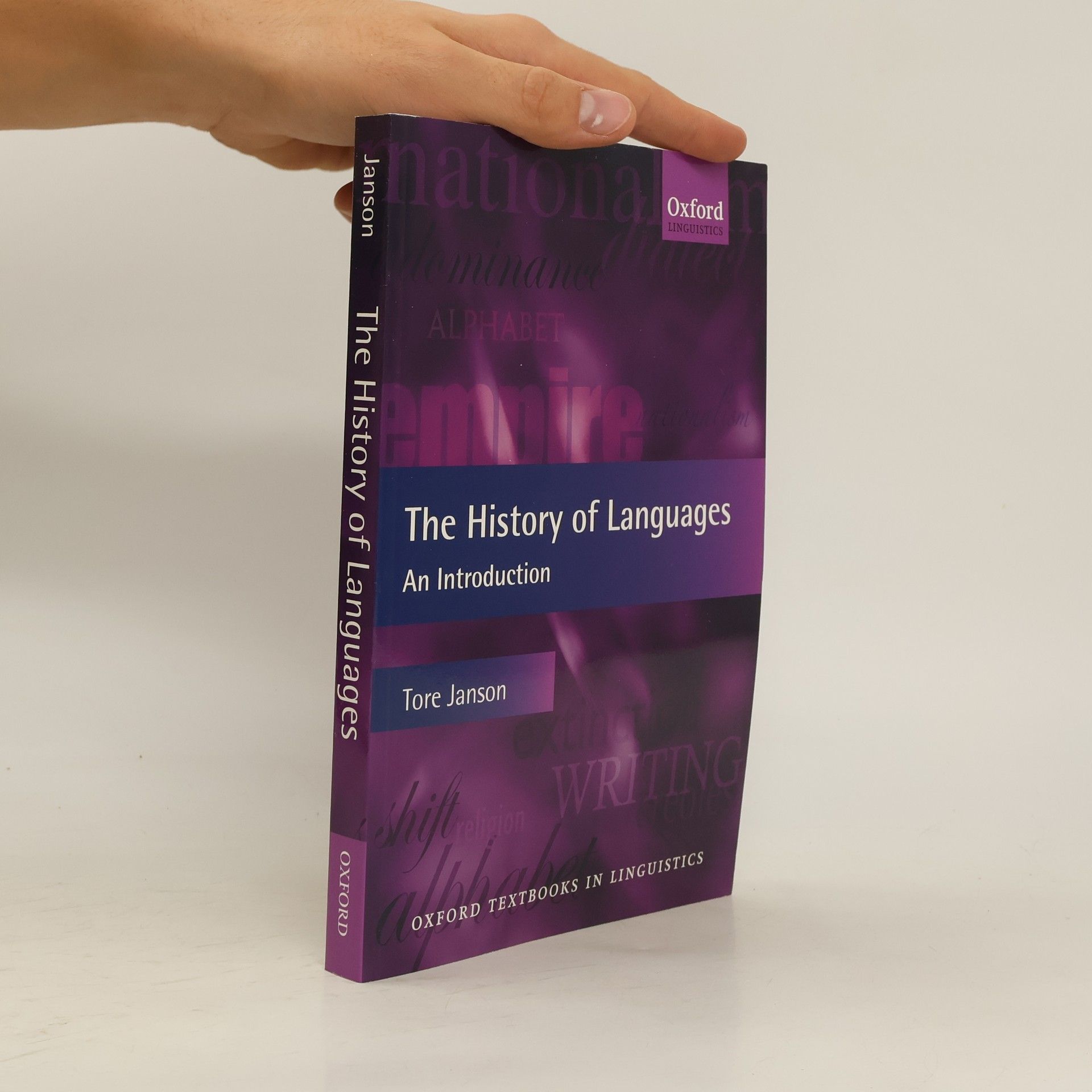An introduction to the history of languages, from distant past to distant future, looking at how languages arise, change, and die, and showing how the histories of peoples and languages are closely connected. It mixes chapters on general processes with accounts of specific languages, including Chinese, Arabic, Greek, Latin, and English.
Tore Janson Livres
Tore Janson est un linguiste et professeur suédois profondément intéressé par l'évolution des langues et leur connexion à la société. Son œuvre explore méticuleusement la dynamique du changement linguistique et les moyens complexes par lesquels le langage façonne et est façonné par son contexte social. Janson se penche sur l'interaction profonde entre la structure linguistique et la réalité sociale, offrant aux lecteurs un aperçu captivant du monde fascinant de la linguistique. Son approche offre une compréhension engageante et perspicace du fonctionnement du langage.





Latin is alive and well. Beginning in Rome around 600 BC Latin became the language of the civilized world and remained so for over two millennia. French, Spanish, Italian, and Romanian are among its progeny and it still provides the international vocabulary of law and life science. No known language, including English - itself enriched by Latin words and phrases - has achieved such success and longevity. Tore Janson tells its history from origins to the present. Brilliantly conceived and written with the same light touch as Speak, his bestselling history of languages, A Natural History of Latin is a masterpiece of adroit synthesis. The author charts the expansion in the classical world, its renewed importance in the Middle Ages, and its survival into modern times. He shows its central role in European history and culture and, by judicious quotation of phrases and texts, describes how spoken and written Latin changed and evolved differently in different places. He ends with a summary of Latin grammar and lists of Latin words and of phrases still in common use. Considered elitist and irrelevant in the second half of the twentieth century and often banned from schools, Latin is now enjoying a huge revival of interest and a renaissance in schools across Europe, the UK, and the USA. Tore Janson offers persuasive arguments for its value and direct access to its fascinating worlds, past and present.
Speak
A Short History of Languages
This book is a history of human speech from prehistory to the present. It charts the rise of some languages and the fall of others, explaining why some survive and others die. It shows how languages change their sounds and meanings, and how the history of languages is closely linked to the history of peoples. Writing in a lively, readable style, distinguished Swedish scholar Tore Janson makes no assumptions about previous knowledge. He takes the reader on a voyage of exploration through the changing patterns of the world's languages, from ancient China to ancient Egypt, imperial Rome to imperial Britain, Sappho's Lesbos to contemporary Africa. He discovers the links between the histories of societies and their languages; he shows how language evolved from primitive calls; he considers the question of whether one language can be more advanced than another. The author describes the history of writing and the impact of changing technology. He ends by assessing the prospects for English world domination and predicting the languages of the distant future. Five historical maps illustrate this fascinating history of our defining characteristic and most valuable asset.
The History of Languages. An Introduction
- 280pages
- 10 heures de lecture
"This is an introduction to the history of languages, from the distant past to a glimpse at what languages may be like in the distant future. It looks at how languages arise, change, and ultimately vanish, and what lies behind their different destinies. What happens to languages, he argues, has to do with what happens to the people who use them, and what happens to people, individually and collectively, is affected by the languages they speak. The book opens by examining what the languages are the hunter-gatherers might have spoken and the changes to language that took place when agriculture made settled communities possible. It then looks at the effects of the invention of writing, the formation of empires, the spread of religions, and the recent dominance of world powers, and shows how these relate to great changes in the use of languages. Tore Janson discusses the appearance of new languages, the reasons why some languages spread and others die, considers whether similar cyclical processes are found at different times and places, and examines the causes of internal changes in languages and dialects. The book ranges widely among the world's languages and mixes thematic chapters on general processes of change with accounts of specific languages, including Chinese, Arabic, Latin, Greek, and English."--Publisher's website
Eine kurze Geschichte der Sprachen
- 280pages
- 10 heures de lecture
Wie entsteht eine Sprache und wann verschwindet sie? Was war eigentlich das Schicksal des Lateinischen? Wann ist Englisch geschaffen worden? Werden in 200 Jahren alle Menschen auf der Erde Englisch or Chinesisch sprechen? Dies sind nur einige der faszinierenden Fragestellungen, denen das Buch Eine kurze Geschichte der Sprachen nachgeht. Es handelt von den historischen Bedingungen, die Sprachen formen, und von dem Einfluss, den Sprachen auf den Lauf der Geschichte haben. Das Buch beginnt mit einer Diskussion der Zeit der Jäger und Sammler, in der es eine enorme Vielfalt an Sprachen gab. Dann geht es über zum Griechischen und Lateinischen und weiter zum Französischen und Italienischen. Die deutsche Sprache ist ebenso Thema wie das Englische, dessen Entwicklung ausführlich dargestellt wird. Auch viele weitere Sprachen werden behandelt, vom südafrikanischen Setswana bis zu der Kreolensprache von Nevis in den Westindischen Inseln. Janson präsentiert Sprachen und Kulturen in einer lebhaften Weise, mit konkreten Beispielen und etlichen Auszügen aus Werken der Literatur. Ohne Vorkenntnisse in fremden Sprachen vorauszusetzen, vermittelt das Buch erstaunliche Einblicke in viele Kulturen und Sprachen. Zugleich identifiziert es langfristige Trends in der Geschichte, die uns gewisse Vorhersagen über die Zukunft der Sprachen erlauben.